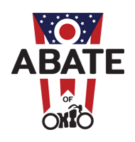April 25, 2024
Today the Insurance Institute for Highway Safety (IIHS) announced updated ratings for vehicle-to-vehicle front crash prevention tests to address crashes that occur at higher speeds and those in which the struck vehicle is a motorcycle or large truck. This is the first time the IIHS has done this type of test involving motorcycles. The IIHS is an independent, nonprofit scientific and educational organization dedicated to reducing deaths, injuries, and property damage from motor vehicle crashes through research and evaluation and by educating consumers, policymakers, and safety professionals.
The trials involving motorcycles positioned the bike in the center of the lane and offset to the left and the right. Tested vehicles were evaluated on forward collision warning and automatic emergency braking (AEB) systems. In each test run, an engineer drives the test vehicle toward the target at the selected speed and records when the forward collision warning occurs and how much the AEB system slows the vehicle to prevent or mitigate the impending impact. Tests are conducted at three different speeds, 31mph, 37mph and 43mph.
Of the ten (10) vehicles tested in the “Small SUV” category just one, the Subaru Forester, received a “good rating.” It achieved this rating by avoiding a crash with the motorcycle at the two lower speeds and slowing from 43 mph to 13 mph before making contact with the bike.
Unfortunately, four of the vehicles tested into the bottom “poor rating.” The Chevy Equinox for example, which was rated poor, “Failed to give a warning, or gave it too late in most tests with the motorcycle target.” To make matters worse its AEB was ineffective, causing the IIHS to state “With the motorcycle target it barely reduced speed at all.”
IIHS Senior Research Scientist David Kidd, who led the development of the new evaluation, pointed out why these new tests are so important, “Motorcyclists are frequently killed when they’re rear-ended by a passenger car since their bike offers no protection from the impact.”
Last December, the IIHS estimated that if the front crash prevention technology worked as well detecting motorcycles as it does for cars and light-duty trucks, 500 fewer rear-end crashes involving motorcyclists would occur annually.
However, challenges remain, as Dr. Kidd stated, “Motorcycles are smaller and narrower than cars, making them more difficult for camera and radar-based systems to identify, especially at higher speeds.” The Motorcycle Riders Foundation thanks the IIHS for beginning to include motorcycles in this testing regimen. We hope these ratings and further tests help educate consumers about what their vehicles can and cannot do, as well as motivate manufacturers to build technology that protects everyone on the road equally.


